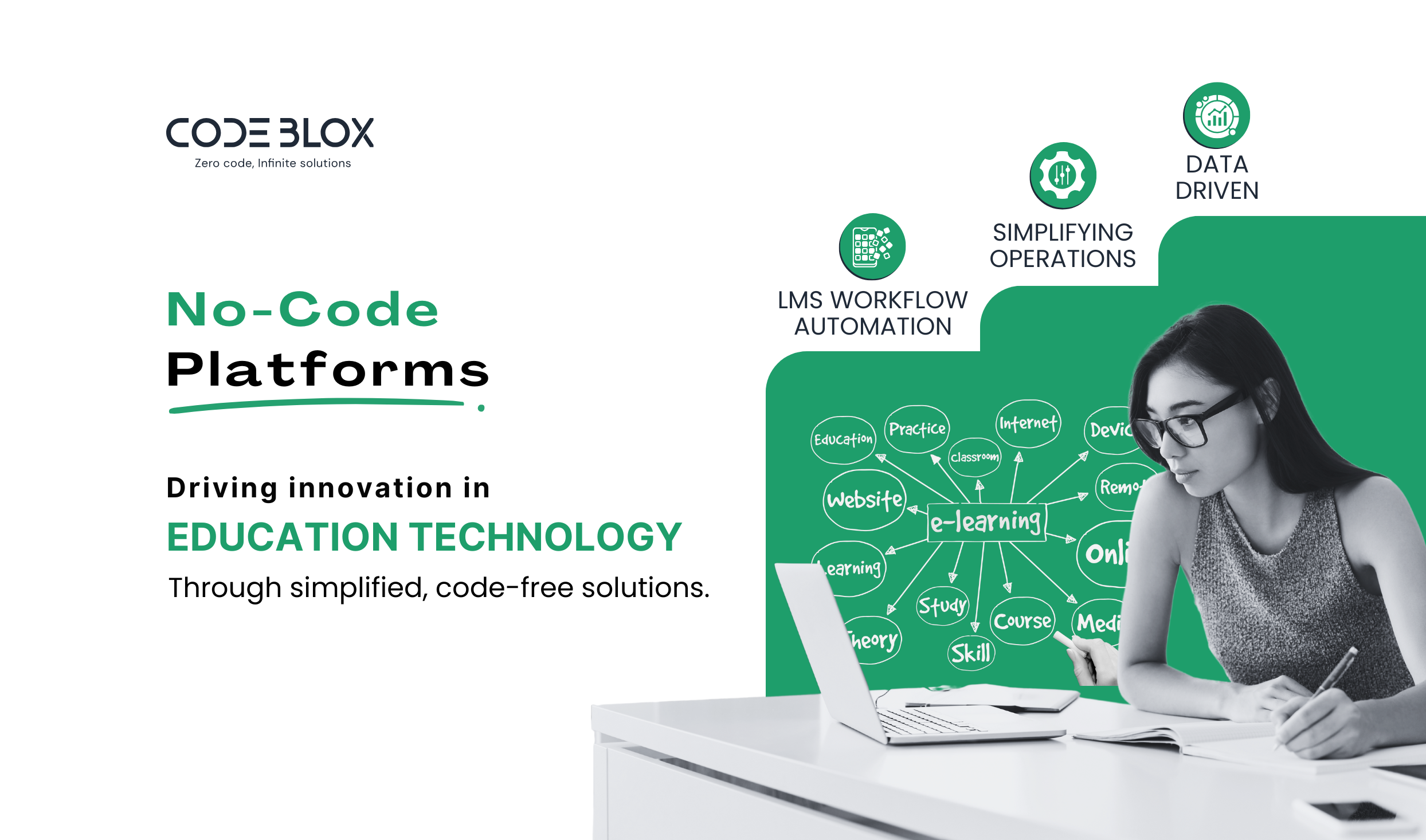Crafting exceptional software solutions exclusively designed for your business needs. Learn More

Picture a teacher designing her own student portal in a weekend, no coding, no IT team, just an idea and the right tools. Around the world, institutions are accelerating their digital learning transformation, expanding access to online education, and personalizing every learner’s journey.
Yet, one major challenge persists: building and maintaining technology fast enough to keep pace with these ambitions.
Traditional software development requires specialized talent, long timelines, and high budgets, all barriers for educators who need solutions now.
This is where no-code education platforms come in. By allowing teams to build applications visually, no-code tools help educators, administrators, and EdTech innovators move from idea to implementation in weeks, not months.
In this article, we’ll explore how no-code platforms are powering education technology innovation, where they work best, and what they mean for the future of learning.

1. Simplifying Digital Operations in Education
Institutions manage complex ecosystems, courses, faculty, attendance, communication, and assessments, often across disconnected systems.
No-code education platforms close this gap by enabling non-technical users to design and connect digital workflows using simple drag-and-drop interfaces.
Key use cases include:
- Online class scheduling apps: Automate timetables, sync sessions with video conferencing tools, and send notifications effortlessly.
- Student attendance systems: Replace paper or spreadsheet tracking with mobile check-ins that update attendance records instantly.
- LMS workflow automation: Simplify repetitive administrative tasks such as grading, course enrollment, and sending progress updates automatically.
By automating routine operations, educators save hours every week, time they can redirect toward improving learning outcomes and student engagement.

2. Building Agile and Custom LMS Solutions
The Learning Management System (LMS) is the backbone of modern digital learning. However, traditional LMS software can be rigid and difficult to adapt.
No-code LMS platforms change that. They enable educators to:
- Customize learning modules and course flows without vendor lock-in.
- Automate engagement through personalized reminders, progress notifications, or gamified triggers.
- Integrate external tools such as analytics dashboards, payment gateways, or communication platforms.
A vocational institute in Southeast Asia built an LMS extension using a no-code tool, automating student enrollment and progress tracking within just one month. The outcome: a 70% reduction in manual data entry and seamless student onboarding.
With no-code LMS workflow automation, institutions can make real-time updates, pilot new learning models, and scale effortlessly.
3. Driving Data-Driven Decision Making
Education generates enormous data, attendance records, assessments, feedback forms, and more. The challenge lies in transforming that data into actionable insight.
With no-code analytics dashboards, administrators can link LMS, CRM, and HR systems without writing a single integration script.
Benefits include:
- Real-time visibility into course performance and student progress.
- Predictive alerts for drop-offs or disengaged learners.
- Simplified, data-rich reporting for accreditation and funding.
By empowering educators with instant insights, no-code education platforms foster a culture of continuous improvement grounded in data, not guesswork.

Conclusion: The Future of Education Technology Innovation
The future of education isn’t just digital, it’s no-code.
By removing technical barriers, no-code education platforms give power back to educators, letting them build, test, and improve faster than ever. Institutions that adopt no-code tools are seeing:
- Faster innovation cycles.
- Lower technology costs.
- Greater ownership of digital transformation.
As the world embraces digital learning transformation, no-code is no longer optional, it’s the new foundation of education technology innovation.




